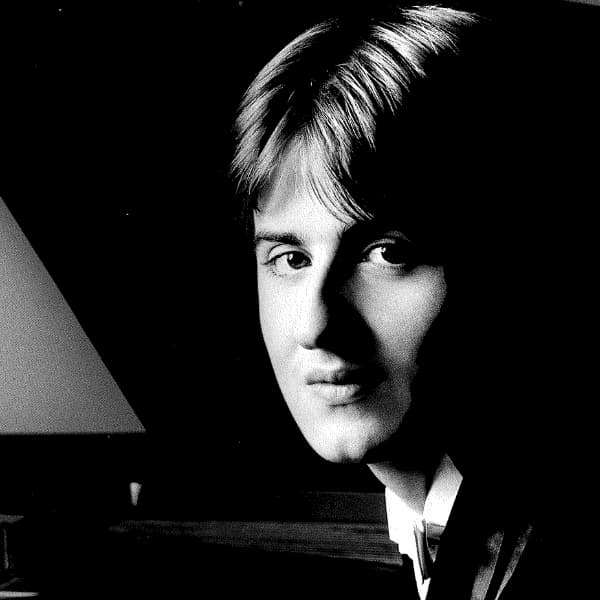Considered one of the best pianists in the world, Jean-Yves Thibaudet has the rare ability to combine poetic musical sensibilities with dazzling technical prowess. As the New York Times writes, “…every note he fashions is a pearl… the joy, brilliance and musicality of his performance could not be missed.” A prolific recording artist with more than 50 albums to his name, Thibaudet has received countless commendations and awards, and his concert attire is designed by Vivienne Westwood.
Jean-Yves Thibaudet Performs Ravel’s Piano Concerto in G Major
Beginnings

Jean-Yves Thibaudet
Jean-Yves Thibaudet was born on 7 September 1961 in Lyon. His parents were not professional musicians but academics with a deep interest in music and the arts. Jean-Yves remembers that they had countless classical records at home. His father had always wanted to be a painter, and he did play the violin; however, life had taken him in a different direction, as he was teaching history and geography at the University of Lyon.
His mother was of German descent and taught German languages and literature at the University. She was also an accomplished pianist. Thibaudet had an absolutely normal childhood, even after his mother introduced him to the piano at age 3. When he took his first formal lessons at the age of five, his mother accompanied him to every lesson and helped him practice at home. Jean-Yves was driven and disciplined, but his parents never pushed him into the limelight; they simply wanted him to have a well-rounded and happy life.
Jean-Yves Thibaudet performs Satie: 3 Gymnopédies (Jean-Yves Thibaudet, piano)
Arthur Rubinstein

Arthur Rubinstein
The story goes that when Jean-Yves Thibaudet was seven, his father took him to a concert to hear pianist Arthur Rubinstein. After the performance, Jean-Yves and his dad met the legendary man backstage, where the precocious boy explained that he’d already made the decision to become a concert pianist. Rubinstein took him on his knee and gave him some sage and lasting advice: Love and value your audience above all else.
As Thibaudet recalled in an interview, “Rubinstein was so right. The audience is like a virtual family, and it is wonderful to see people coming to concerts and some you see over and over again. They age with you and eventually bring their wives or husbands or their children. Then they bring the grandchildren. It is incredible to see. In normal life, when we travel all the time, and we don’t see our own family and our own friends so much, we’re a little bit without roots. We are citizens of the world, so the audience is our family.”
Jean-Yves Thibaudet Performs Liszt’s Piano Concerto No. 2 in A Major
Lucette Descaves

Jean-Yves Thibaudet, 1981
Thibaudet made his first public appearance at age 7, and he first performed with an orchestra at age 11, playing Ravel’s Concerto in G Major. At 12 he graduated with a gold medal from the conservatory of Lyons, and his parents encouraged him to continue his education at the Paris Conservatoire. Thibaudet was assigned to Lucette Descaves, who had studied in the class of Marguerite Long and considered her a spiritual heir. Through Long and Descaves, Thibaudet has a direct musical connection to Maurice Ravel.
As he explained, “It was fantastic that Descaves knew Ravel, knew Prokofiev. She would speak of them often, and it was almost like the door would open and Ravel would walk in and say, ‘Hi, let me tell you a few things here and there.’” Thibaudet also remembers that Descaves had musical scores of Ravel tucked in a cupboard with notes on them in different coloured inks. “All the blue are from Ravel.” These notes are not just tips on interpretation but corrections of mistakes, and Thibaudet is eager to pass on these corrections to the next generation.
Jean-Yves Thibaudet performs Ravel: Gaspard de la nuit (Jean-Yves Thibaudet, piano)
Eclecticism and Fashion

Jean-Yves Thibaudet performs at Seiji Ozawa Hall © Hilary Scott
Thibaudet developed a reputation as being a specialist of French classical music. However, he has also ventured into jazz and film music, with recordings such as “Conversations with Bill Evans” and “Reflections on Duke” and movie soundtracks such as “The Portrait of a Lady,” “Extremely Loud and Incredibly Close,” “Atonement” and “The French Dispatch.”
Instead of wearing standard tuxedos, Thibaudet prefers concert attire designed by Vivienne Westwood. “I always thought,” he explained in an interview, “Why do we have to wear this boring tails and white tie that have been worn the same way for hundreds of years? A concert is a special experience. It’s something that should be beautiful and memorable in every respect. So as an artist, I have to respect that and arrive on stage looking really festive and fitting for the occasion.”
For more of the best in classical music, sign up for our E-Newsletter
